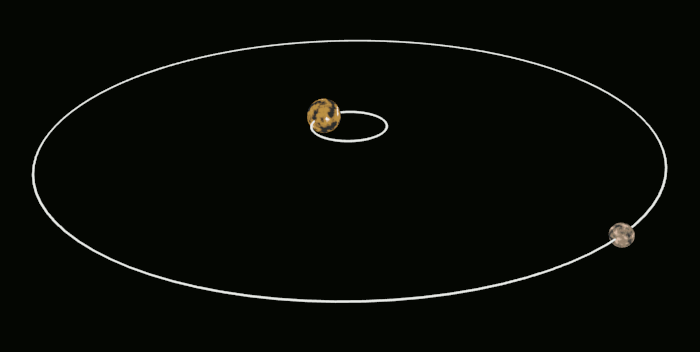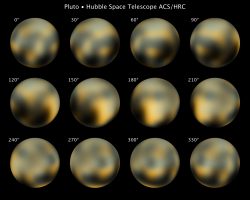Pluto and New Horizons’ Findings.
First discovered in 1930 by Clyde Tombaugh, our knowledge of Pluto has come a long way. From its orbit, composition, its five satellites and, most recently, all the data gathered from the New Horizons spacecraft visit, what we continue to discover about the dwarf planet continues to amaze scientists.

Timeline
Long after its discovery more scientists took a closer look at Pluto, leading to the following discoveries:
- In 1976 methane ice was discovered on Pluto’s surface when Dale Cruikshank and colleagues attached cameras with infrared filters to a telescope.
- In 1978, Charon, the first satellite orbiting Pluto, was discovered by Jim Christy and Bob Harington when noticing an elongated shadow blob to the north of the planet which later disappeared -this being evidence of an eclipse.
Though later research, astronomers calculated that Charon was almost half the size of Pluto. This made both objects spin around their mutual center of gravity.
By Stephanie Hoover - Own work, CC0, Link
- In 1995 Mark Buie and Alen Stern, using the Hubble telescope get the first direct images of Pluto’s surface. Although very blurry, these were the first images of the then-called 9th planet.

- In 2005, Hal Weaver and Alan Stern were able to use the Hubble space telescope again and discovered two more moons, Nix and Hydra, with long exposure images.
- Most recently, Mark Showalter discovered two new moons Kerberos in 2011 and Styx in 2012.
Re-classification of Pluto
From the 1990s on, many more objects were discovered in the Kuiper belt. This and the fact that Pluto wasn’t much bigger than our moon led scientist to re-classify Pluto and other smaller bodies, into dwarf planets in 2006.
Pluto is also part of the Trans-Neptunian objects, objects that orbit the Sun at a greater distance than Neptune; and, since it is 70% rock and 30% ice, Pluto is also part of the icy-dwarf planets as well.
New Horizons Fly-by
On July 14, 2015, the New Horizons spacecraft flew by Pluto giving us mesmerizing new images of the Dwarf planet and its moons. Scientists started analyzing add the data and these are the findings:
- Jagged landscapes around pluto’s equator are made of frozen methane. These resemble rows of knives with the edges pointing up and measuring hundreds of feet tall.
- Pluto’s atmosphere is colder than predicted. Scientists published this study proposing a possible cooling mechanism based on New Horizons’ findings.
- Its estimated that Pluto is 70% rock and 30% and could well have an internal water-ice ocean.
- Pluto’s vast 1,000-kilometer-wide heart-shaped nitrogen-ice plain (informally called Sputnik Planum) that New Horizons discovered is the largest known glacier in the solar system.
- Learn more about Pluto’s geology here.
- Pluto’s atmosphere is blue.
- Charon’s enormous equatorial extensional tectonic belt hints at the freezing of a former water ice-ocean inside Charon in the distant past.
- Charon’s reddish north polar region could be the result of atmospheric gases that escaped Pluto and then reached Charon’s surface.
Resources for Educators
- If you’re wondering why did Hubble take such blurry photos of Pluto but beautifully detailed pictures of faraway galaxies, here is the answer.
- New Horizons Documentary
- Follow New Horizons’ missions and findings!
- New Horizons top 10 discoveries.


